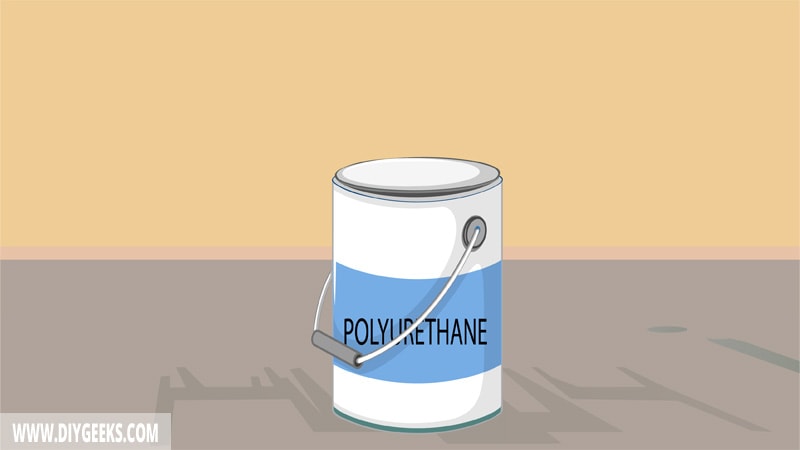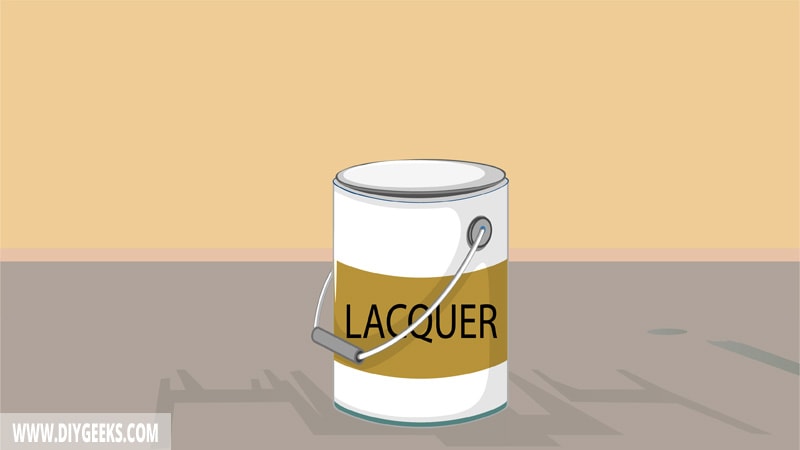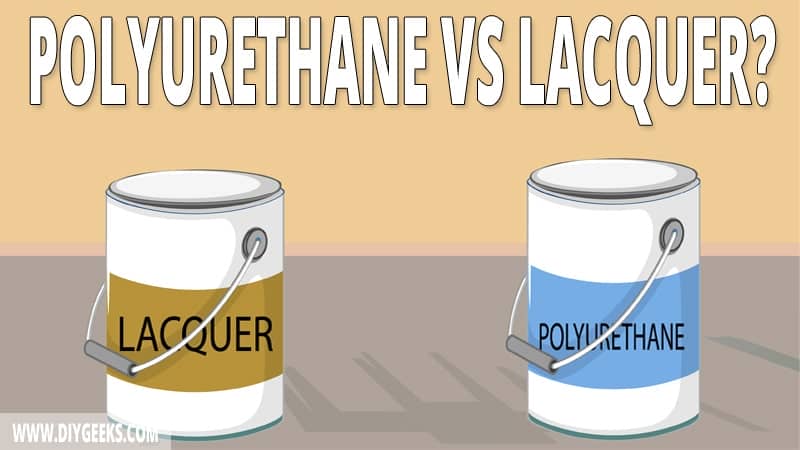Polyurethane is a plastic-like finish that forms a moisture-resistant layer (barrier) over surfaces. Lacquer is a protective sealer that protects interior surfaces from low water or moisture exposure.
Polyurethane can be used for exterior and interior surfaces and is more durable than lacquer. Lacquer has better surface adhesion, is easier to apply, and retains its clear finish longer than polyurethane.
What is Polyurethane?

Polyurethane is a plastic-like protective finish that seals and protects surfaces from moisture, water, scratches, and weather elements.
It forms a glossy transparent (or colored) moisture-resistant finish that prevents water or moisture penetration. Polyurethane is a topical finish and doesn’t penetrate the surface pores to adhere, it stays over the surface top layer where it creates its protective barrier.
There are two polyurethane types; oil-based and water-based. These two types come in different sheens; from flat to high-gloss. There are tinted polyurethanes too.
What is Lacquer?

Lacquer is a clear (or tinted) protective coating that is applied over several surfaces (usually wood) to enhance the appearance and offer protection. It’s known for its fast dry time.
It creates a finish that’s resistant to low water or moisture amounts but can’t protect surfaces from constant water or moisture. Lacquer is more suitable for interior surfaces as it doesn’t last long if exposed to outdoor weather elements.
Polyurethane vs Lacquer
The differences between polyurethane and lacquer are listed below.
Formula
Polyurethane has a more synthetic formula than lacquer as it’s obtained from synthetic additives and binders.
Lacquer has a more natural formula as it’s obtained from tree sap and shellac. Its formula makes its viscosity thinner.
Surface Adhesion
Lacquer adheres better to surfaces than polyurethane as it has a thinner viscosity and penetrates the surface pores, creating good adhesion.
Polyurethane doesn’t have good surface adhesion as has a thicker viscosity and doesn’t penetrate the surface pores as it’s a topical finish. Topical finishes adhere over the surface top layer and create a layer over it without penetrating the pores.
Durability
Polyurethane is more durable than lacquer as it creates a flexible plastic-like finish that contracts and expands based on temperature change and is resistant to moisture, water, scratches, and dents.
Lacquer is also durable, but it can get damaged if exposed to constant water or handling.
Sealer Thinning
You don’t need to thin polyurethane or lacquer before applying it unless you want a thinner finish.
Interior or Exterior Surfaces
You can use polyurethane for interior and exterior surfaces as it has different types suitable for different surfaces. For instance, you can use water-based polyurethane for interior surfaces and exterior polyurethane for exterior surfaces.
You can use lacquer for interior and exterior surfaces, but it isn’t as strong or durable to withstand constant water or weather elements.
Ease of Application
Lacquer is easier to apply as it has a thinner viscosity, adheres better, doesn’t leave brush marks after it dries, and dries faster. Since lacquer dries faster, you can apply multiple coats faster.
Polyurethane is harder to apply as it has a thicker viscosity and takes longer to dry. Thicker sealer are harder to control and apply as they can cause finish drips.
Sealer Variety
Lacquer offers more variety, types, and colors to choose from than polyurethane. Lacquer has different types including acrylic, water-based, oil-based, etc.
Polyurethane has a more limited variety as there are two types only; water-based and oil-based.
Finish Clarity
Polyurethane and lacquer create a transparent (clear) finish that doesn’t enhance the surface color shade.
However, lacquer finish retains its clear finish longer than polyurethane. Oil-based polyurethane tends to yellow over time.
Finish Maintenance
Polyurethane and lacquer are easy to clean and maintain. However, polyurethane tends to accumulate more dust while drying as it takes longer to dry than lacquer.
Cost
Polyurethane and lacquer have a similar price tag, but you need more lacquer containers as you need more coats for proper coverage and durability.
Related Read: Can You Paint Over Lacquer?
Which Sealer Do You Need?
Before choosing a sealer for your painting project, consider the following things.
- Budget: Use polyurethane if you have a lower budget. While both sealers have a similar price tag, you need more lacquer coats for proper coverage and durability.
- Surface: Use lacquer for interior surfaces, and exterior polyurethane for exterior surfaces.
- Protection: Use polyurethane for high-traffic surfaces that require more protection, and lacquer for low-traffic decorative surfaces.


